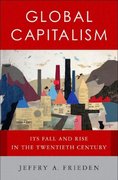What is the interest rate that banks charge each other for The Federal Reserve engages in another round of quantitative overnight and short-term lending? (1 point) easing. What are the effects of this policy on the economy? (1 point) federal funds rate Banks do not have as much funds to issue loans to reserve requirements O consumers and businesses, which decreases consumer and business spending, and slows O discount rate economic growth. O prime rate The rate of inflation decreases as the money Which situation best describes how a change in the reserve O supply decreases, which slows economic growth requirements affects the economy? (1 point) and increases unemployment. If the reserve requirements loosened, more funds The rate of inflation decreases as the money O supply increases, which causes an increase in O are in reserves and banks do not have as much to lend, leading to an increase in interest rates and a consumer spending, employment, and economic growth. decrease in economic growth. Banks have more funds to issue loans to If the reserve requirements loosened, less funds consumers and businesses, which increases O are in reserves and banks would have more to consumer and business spending, employment, lend, leading to an increase in interest rates and an and economic growth. increase in economic growth. Which policy affects the prices of assets, and short-term and long- If the reserve requirements tightened, less funds term interest rates? (1 point) are in reserves and banks do not have as much O funds to lend, leading to a decrease in interest monetary policy rates for customers and an increase in economic growth. reserve requirements If the reserve requirements tightened, more funds O tax policy O are in reserves and banks do not have as much to O fiscal policy lend, leading to an increase in interest rates for Distinguish the benefits of the Federal Reserve issuing repurchase agreements (repos) and reverse repurchase agreements (reverse repos). (1 point) Banks can sell repos back to the Federal Reserve O at a higher price. Reserve repos result in a temporary increase of a bank's reserves and maintain liquidity in the banking system. Banks can sell repos to other financial institutions O for increased liquidity. Banks can buy reverse repos from other financial institutions at a discount. Repos result in a temporary increase in a bank's reserves and maintain liquidity in the banking O system. Banks can sell reverse repos back to the Federal Reserve at a higher price in a short period of time. Banks can buy repos from other financial O institutions at a discount. Banks can sell reverse repos to other financial institutions for increased liquidity







